It looks like you're using an Ad Blocker.
Please white-list or disable AboveTopSecret.com in your ad-blocking tool.
Thank you.
Some features of ATS will be disabled while you continue to use an ad-blocker.
share:
First things first: Yes, I know that ATS has a search feature, and yes, I realize that there are loads of threads on wild edibles.
I would like to take what I hope is a different approach on wild edibles. We can all read about them day and night, but reading doesn’t replace first hand experience.
So, the challenge is this: Go out to your yard, or if you don’t have a yard, your boundary is approximately one city block. Take a picture of it, and then post it here with the following topics addressed:
1. Your general location
2. A recipe or directions for preparing the edible, and indicate if it can be eaten raw.
3. If it can be eaten raw, taste it! Now, describe its flavor.
4. What do you already know about this edible WITHOUT having to look it up? For example, is it a good source of a specific nutrient or does it have a medicinal use?
5. Last, google the edible you found, and tell one fact about it that you didn’t know before you started.
Of course, please make sure that you are 100% certain of your edible identification before you consume it! Involve your kids if you like, I did, and mine enjoyed it!
For easier readability, please limit each post to only ONE edible.
HERE'S MINE: Clover

1. Location: Eastern North Carolina
2. Can be eaten raw. Recipe: mix pancake mix as the box instructs. Dip the clovers into the batter, then fry
until golden brown.
3. The white flower tops eaten raw taste like arugula.
4. Clovers are a good source of protein.
5. The Cherokee used a tea made from white clover flowers to treat fever.
I would like to take what I hope is a different approach on wild edibles. We can all read about them day and night, but reading doesn’t replace first hand experience.
So, the challenge is this: Go out to your yard, or if you don’t have a yard, your boundary is approximately one city block. Take a picture of it, and then post it here with the following topics addressed:
1. Your general location
2. A recipe or directions for preparing the edible, and indicate if it can be eaten raw.
3. If it can be eaten raw, taste it! Now, describe its flavor.
4. What do you already know about this edible WITHOUT having to look it up? For example, is it a good source of a specific nutrient or does it have a medicinal use?
5. Last, google the edible you found, and tell one fact about it that you didn’t know before you started.
Of course, please make sure that you are 100% certain of your edible identification before you consume it! Involve your kids if you like, I did, and mine enjoyed it!
For easier readability, please limit each post to only ONE edible.
HERE'S MINE: Clover

1. Location: Eastern North Carolina
2. Can be eaten raw. Recipe: mix pancake mix as the box instructs. Dip the clovers into the batter, then fry
until golden brown.
3. The white flower tops eaten raw taste like arugula.
4. Clovers are a good source of protein.
5. The Cherokee used a tea made from white clover flowers to treat fever.
Rosehips (a member of the apple family)

Available almost anywhere... (wild roses)
Pick in the fall right after the first frost when the hips are either red or orange (they are a fruit, best when firm, not spongy or otherwise rotting)
Just one of these little suckers are double in vitamin C than an orange, they also have vitamin A and calcium.
You can eat them raw, make then into tea, soup, syrup, pie, jam or add as garnish in salad. Use them as you would any fruit.
Some people remove the seeds within as they can irritate sensitive intestines...

Available almost anywhere... (wild roses)
Pick in the fall right after the first frost when the hips are either red or orange (they are a fruit, best when firm, not spongy or otherwise rotting)
Just one of these little suckers are double in vitamin C than an orange, they also have vitamin A and calcium.
You can eat them raw, make then into tea, soup, syrup, pie, jam or add as garnish in salad. Use them as you would any fruit.
Some people remove the seeds within as they can irritate sensitive intestines...
Will do in the morning. Never know what you'll find outdoors in the dark. Maybe some blooming wolfbane?
Naw, the moon is waning.
Naw, the moon is waning.
Great thread Mojave,
Alas the sun has set, I will take a wild edible adventure first thing. Would you like us to post one at a time or would you be interested in everything we can find in our general area ?
Looking forward to seeing what we can come with
Penny
Alas the sun has set, I will take a wild edible adventure first thing. Would you like us to post one at a time or would you be interested in everything we can find in our general area ?
Looking forward to seeing what we can come with
Penny
reply to post by MojaveBurning
The ocotillo cactus. After you cut the stalks rhrow them in a fire until the thorns are burned of, slice down the middle eat the inners, they taste like asparagus. Prickly pear cactus, remove thorns the inner is comparable to water source. The flower ontop when it turns dark red can be eaten as a fruit or made into jam. What i have come to know about the desert is, what the wild animals like deer or rabbit eat we humans can eat. Most wildfowers are also eatable.
The ocotillo cactus. After you cut the stalks rhrow them in a fire until the thorns are burned of, slice down the middle eat the inners, they taste like asparagus. Prickly pear cactus, remove thorns the inner is comparable to water source. The flower ontop when it turns dark red can be eaten as a fruit or made into jam. What i have come to know about the desert is, what the wild animals like deer or rabbit eat we humans can eat. Most wildfowers are also eatable.
edit on 2-5-2013 by lbndhr because: (no reason given)
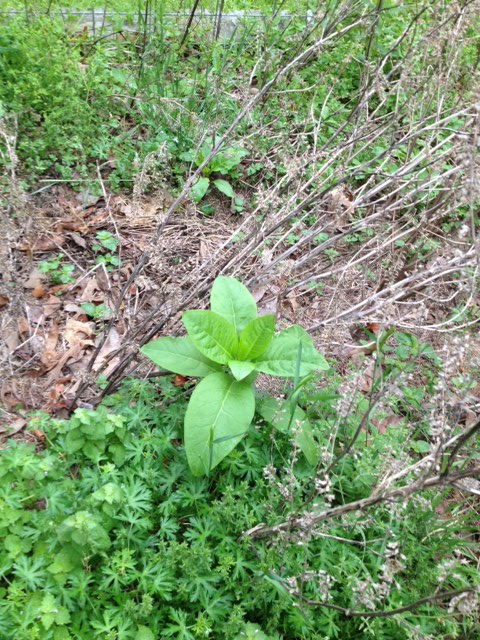
Poke, poke weed, poke salad
1)ArkLaTex area
2)DO NOT eat raw
3)raw flavor--bitter--do not eat raw
4) things I knew--- Birds get drunk on berries. Leaves must be boiled in 3 separate washes before eating.
5) Google facts: Alabama Co-op Externsion service says "Do not eat any parts of this plant, they are all poisonous"
Meanwhile
The 39th Annual Poke Salad Festival will be held in Blanchard, Louisiana later this week.
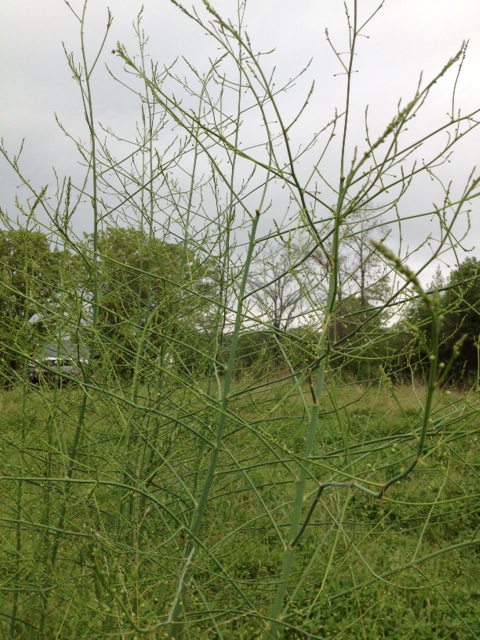
Wild Asparagus
Got photos of several different edibles while going down to get the Newspaper this morning. I'll stop for a while after this one.
ArkLaTex area
Usually eaten steamed
Spears come up from ground around the larger stems and also occur at end of branches.
Excellent taste
Over 100 types of tame asparagus. Was part of the Epicurean Feasts in Roman days.
edit on 2-5-2013 by MuzzleBreak because: add info
Pawpaw fruit
www.npr.org...
May apple
www.wildwoodsurvival.com...
www.npr.org...
May apple
www.wildwoodsurvival.com...
edit on 2-5-2013 by ga-`tv-gi because: (no reason given)
Saving this one for later...unfortunately I have no garden, but I was clearing and weeding the graveyard at work today and spotted one or two things
that may suffice...just edibles or can we lean towards medicinal plants too?
Either way, dark now, so it will have to wait until tomorrow
Either way, dark now, so it will have to wait until tomorrow

Ha ya beat me too! That is cool I'll add the Folklore.

Polk Sallet- Phytolacca acinosa is a nutritious wild polkweed that is a staple in many parts of the south that is mostly chopped fresh and scrambled in eggs. I certainly ate my share of it growing up but mostly it was a great way for a kid to make some cash. About 6 crates were cut here by co-op kids that will be working here this summer. They will be for sale at the Franklin(TN) market-in the morning as a matter of fact. Each bunch is about 12 stalks and they will go for about $4.00.
The toxic berries that mature in the fall were used by The Kaskinampo Indians as a poison and made into an ink that I have failed miserably at despite many attempts.
The root of the southern polkweed was one of their medicine men most powerful healing tools and their version of the poultice using polk root, mustard root and sassafras root was copied by settlers and could be bought in Apothecaries all over the South and Northeast. They soaked the roots and twisted them into bracelets the warriors wore into battle. They stymied blood flow and styptic pencils also sold at stores were dried polkroot.
Here it get somewhat darker as they were also a part of folklore rites and a big part of witchcraft. These college kids are beside themselves with the notion that girls in Puritan dresses will be lining up to buy the bunches of polk- and asking about the roots, when and if they will be for sale. Stevie Nicks wannabees we always called them. The plant is always swallowed up by the rest of the flora and finding the root is difficult and kills the plant. This is America and if they want to practice witchcraft as a religion more power to them and I know they are harmless and just fascinated by it's history-and I guess they get a chill out of all the things-that really did happen in the 16th 17th and early 18th century in America.
The folklore rites involve early settlers and there Godly fear of death from an affliction that was known a pineing away. You can start an argument that will last for days on end between folklore experts as to just what that sickness was-however there is little doubt as to what frightened them so much-to go to the extremes they went to. The young girls that died-in the settlers minds had been violated by an incubus( a sexual vampire) and their rite was grotesque. It involved---the placing of various things in the girls mouth and polk berries were part of it not going into to much detail. Thousands and thousands of girls were buried that way. The practice was more a New England thing as it was kept very discreet in the South as the slaves had plenty of their own biblical type fears and had enough things to be terrified about without this odd and really bizarre rite.
You can-if you look hard enough still find obituaries from that era in which list cause of death as pineun or pineing-with the caption "Buried in the old ways of the church"
reply to post by MuzzleBreak
You got wild asparagus there? Lucky you. I remember taking a walk with my dad in the old country when I was 5 and picking wild asparagus. They taste great fried in a pan and then crack an egg over them.
There are a few weeds here in Australia that should be there too, often find them in lawns. Wild chicory.
I have put a lot of photos because this stuff is a hardy weed and does grow everywhere around here.
IMO this is one worth getting to know. I have eaten it lots of times, better than a vitamin pill. Use them just like any spinach/green leaf. I like it boiled, then dressed with just a little bit of sautéed bacon (or any air dried meat) and garlic. After boiling you can chop it up and mix with egg, grated cheese and bread crumbs to make a straciatelli. Or just dressed with a little vinegar if you are in a tough situation.
Very high in iron and other nutrients, you do need a lot for the calorie intake though and needs to be boiled to be more digestible.
In hot weather they get bitter, best in the cooler months. They only take a month to grow. The leaves are usually between 2 and 5 inches long depending on rainfall. Sometimes glaborous (hairy) sometimes smooth. Mostly deeply serated but sometimes not.
Chicory leaves, note the mix of indentations and straight and the small leaf, if you are in a tight spot, this can keep you alive and your neighbours could be starving not realizing their lawns have food.
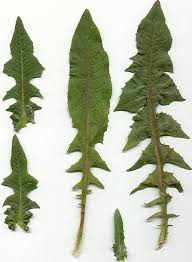
In the best conditions they can get this big, they often have a lot more leaves to a bunch, this is a pic of my mama picking some on the roadside outside our place.
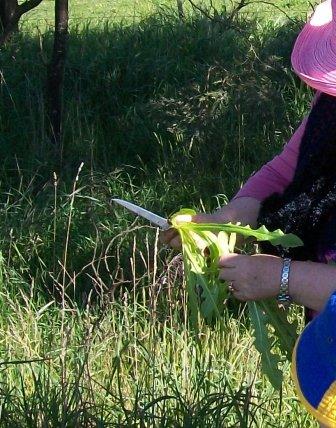
You can find them in lawns hiding amongst the grass, or roadsides and fields (if the livestock haven't got to them first)
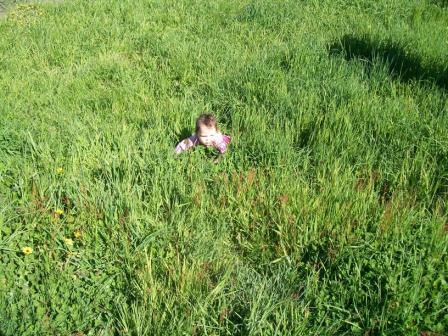
ok I just put that in to show of my cute girl lol
These are the cultivated types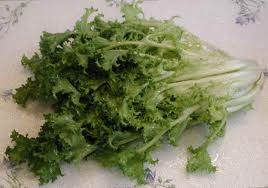
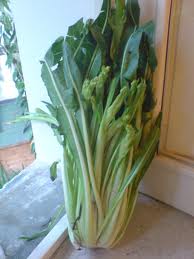
flowers. By this stage you probably should just go for the roots.
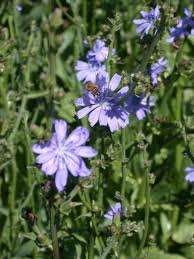
The root is edible too, it can provide more calories but not sure how it tastes or if you should eat much of it. The seeds are a traditional substitute for coffee, roast and grind them but unfortunately no caffeine, on fact you can buy it in supermarkets around here.

You got wild asparagus there? Lucky you. I remember taking a walk with my dad in the old country when I was 5 and picking wild asparagus. They taste great fried in a pan and then crack an egg over them.
There are a few weeds here in Australia that should be there too, often find them in lawns. Wild chicory.
I have put a lot of photos because this stuff is a hardy weed and does grow everywhere around here.
IMO this is one worth getting to know. I have eaten it lots of times, better than a vitamin pill. Use them just like any spinach/green leaf. I like it boiled, then dressed with just a little bit of sautéed bacon (or any air dried meat) and garlic. After boiling you can chop it up and mix with egg, grated cheese and bread crumbs to make a straciatelli. Or just dressed with a little vinegar if you are in a tough situation.
Very high in iron and other nutrients, you do need a lot for the calorie intake though and needs to be boiled to be more digestible.
In hot weather they get bitter, best in the cooler months. They only take a month to grow. The leaves are usually between 2 and 5 inches long depending on rainfall. Sometimes glaborous (hairy) sometimes smooth. Mostly deeply serated but sometimes not.
Chicory leaves, note the mix of indentations and straight and the small leaf, if you are in a tight spot, this can keep you alive and your neighbours could be starving not realizing their lawns have food.

In the best conditions they can get this big, they often have a lot more leaves to a bunch, this is a pic of my mama picking some on the roadside outside our place.

You can find them in lawns hiding amongst the grass, or roadsides and fields (if the livestock haven't got to them first)

ok I just put that in to show of my cute girl lol
These are the cultivated types


flowers. By this stage you probably should just go for the roots.

The root is edible too, it can provide more calories but not sure how it tastes or if you should eat much of it. The seeds are a traditional substitute for coffee, roast and grind them but unfortunately no caffeine, on fact you can buy it in supermarkets around here.

Birch trees - the syrup. Not native to Australia but hardly a block of housing in the SE here wouldn't have at least 2 of them. Very popular garden
tree in the late eighties here.
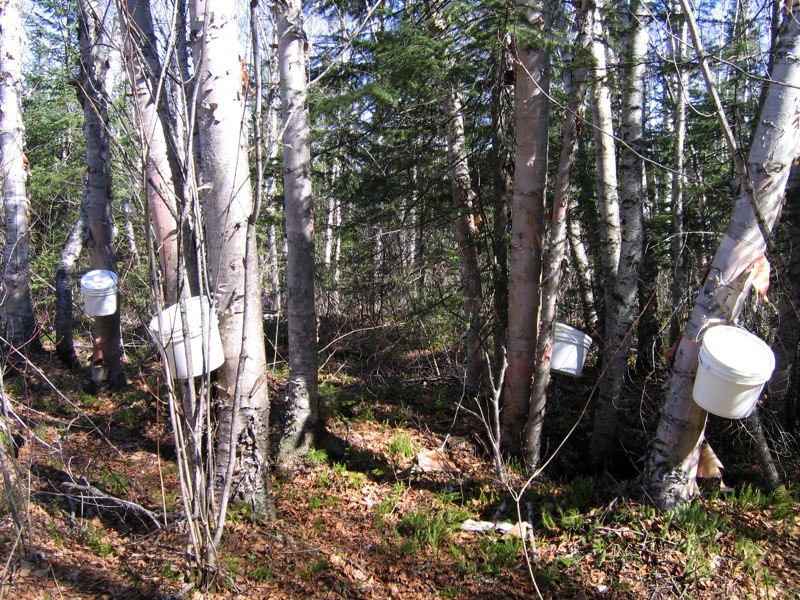
I know how to make it already but wiki has all the info already typed up
It is only available a week or two in the year and you have to boil it down a lot but it is worth the effort for such a high calorie food, and no one here knows about it.

I know how to make it already but wiki has all the info already typed up
It is only available a week or two in the year and you have to boil it down a lot but it is worth the effort for such a high calorie food, and no one here knows about it.
Amazing how the wild chicory in Australia can so resemble what grows here on the other side of the world. Are there wild poppies that grow in the area
as well?
Muscadine grapes
blog.emergencyoutdoors.com...
Must admit, not my picture. Vines are here but no grapes yet. Crazy weather!
Muscadine (Vitis rotundifolia) is a member of the grape family. It is native to much of North America and grows wild in roadsides and forests.
blog.emergencyoutdoors.com...
Must admit, not my picture. Vines are here but no grapes yet. Crazy weather!
Henbit
It is a stingless nettle. It sometimes has purplish flowers. It has a very distinctive smell. It is a member of the mint family but doesn't taste like mint.
How to eat it
We usually have this stuff everywhere in Arkansas. It has been unseasonably cold this year and I haven't seen any. I saw plenty of clover in the yard but no henbit yet. It will take over the yard if you don't mow it down. If you do mow it down, it just grows back anyway.
I have seen henbit growing along with the stingless nettle. They look very similar. The nettle has heart shaped fuzzy leaves and henbit has a more maple leaf or three pointed shape. Both are edible though. I never ate any but I would if hungry. It does smell rather nice.
We have saw palmetto, lilly pads and cattails in swampy areas. You can find nut trees such as pecans and fruit trees such as the persimmon. I love wild persimmons. Now and then I get a "puckery" one. If you get one that isn't ripe it is so sour it will make you pucker up in disgust. Also there is something in it that will seem to draw all the siliva out of your mouth instantly. I don't know how to describe it but it will be sour and dry your mouth at the same time. Ripe persimmons are mushy and orange, but the skin will start to be frosted with purple. If it is really ripe the skin will be brownish or purplish and even wrinkly. Overripe will be sort of dry but still mushy and mostly brownish or purplish. You can still eat it though, if there are no bugs on it. It will be more like a prune by then.
Around where I live no one bothers with persimmons. I mean, the deer and birds love them but I haven't met many people who bother eating those. They are very good. They have a rich flavor when fully ripe. It sort of reminds me of fruit cake. Sort of a date like flavor and a citrus flavor. It doesn't really taste like any other fruit so you have to try a wild one. The ones in the store don't have the same flavor at all. Also the ones you get the store are usually sold very firm. If you eat it when you first buy it, it won't be good. You really need to let it soften a lot before you eat it. Then it has the best taste, but still doesn't taste anything like a wild one does.
It is a stingless nettle. It sometimes has purplish flowers. It has a very distinctive smell. It is a member of the mint family but doesn't taste like mint.
How to eat it
We usually have this stuff everywhere in Arkansas. It has been unseasonably cold this year and I haven't seen any. I saw plenty of clover in the yard but no henbit yet. It will take over the yard if you don't mow it down. If you do mow it down, it just grows back anyway.
I have seen henbit growing along with the stingless nettle. They look very similar. The nettle has heart shaped fuzzy leaves and henbit has a more maple leaf or three pointed shape. Both are edible though. I never ate any but I would if hungry. It does smell rather nice.
We have saw palmetto, lilly pads and cattails in swampy areas. You can find nut trees such as pecans and fruit trees such as the persimmon. I love wild persimmons. Now and then I get a "puckery" one. If you get one that isn't ripe it is so sour it will make you pucker up in disgust. Also there is something in it that will seem to draw all the siliva out of your mouth instantly. I don't know how to describe it but it will be sour and dry your mouth at the same time. Ripe persimmons are mushy and orange, but the skin will start to be frosted with purple. If it is really ripe the skin will be brownish or purplish and even wrinkly. Overripe will be sort of dry but still mushy and mostly brownish or purplish. You can still eat it though, if there are no bugs on it. It will be more like a prune by then.
Around where I live no one bothers with persimmons. I mean, the deer and birds love them but I haven't met many people who bother eating those. They are very good. They have a rich flavor when fully ripe. It sort of reminds me of fruit cake. Sort of a date like flavor and a citrus flavor. It doesn't really taste like any other fruit so you have to try a wild one. The ones in the store don't have the same flavor at all. Also the ones you get the store are usually sold very firm. If you eat it when you first buy it, it won't be good. You really need to let it soften a lot before you eat it. Then it has the best taste, but still doesn't taste anything like a wild one does.
reply to post by spooky24
No poppies.
Wattle seed, a staple for the aborigines, lots of wattle around here, it has a nutty/honey taste. The are tiny, it takes a lot of time to collect enough to fill up on them. A few years ago wattlecinos were popular. My avatar is a wattle flower. There are about 130 species.
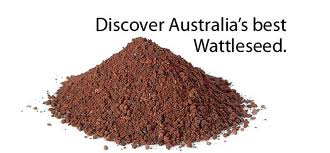
Pods
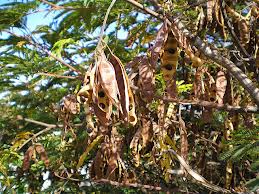
No poppies.
Wattle seed, a staple for the aborigines, lots of wattle around here, it has a nutty/honey taste. The are tiny, it takes a lot of time to collect enough to fill up on them. A few years ago wattlecinos were popular. My avatar is a wattle flower. There are about 130 species.

Pods

Violets

All parts can be eaten raw. The leaves and flowers are good in salad, and the flowers in particular are very sweet. The flowers, dipped in a weak icing sugar mix, are traditionally used as cake decorations. Or they can be steeped in syrup or honey. Also, all parts, can be dried and made into a tea, or used an aromatic herb in cooking.
Rich in vitamin A and C, and antioxidants. It also contain Cyclotides.
en.wikipedia.org...

All parts can be eaten raw. The leaves and flowers are good in salad, and the flowers in particular are very sweet. The flowers, dipped in a weak icing sugar mix, are traditionally used as cake decorations. Or they can be steeped in syrup or honey. Also, all parts, can be dried and made into a tea, or used an aromatic herb in cooking.
Rich in vitamin A and C, and antioxidants. It also contain Cyclotides.
Cyclotides have been reported to have a wide range of biological activities, including anti-HIV, insecticidal, anti-tumour, antifouling, anti-microbial, hemolytic, neurotensin antagonism, trypsin inhibition, and uterotonic activities.[4][5][6] An ability to induce uterine contractions was what prompted the initial discovery of kalata B1.[7]
en.wikipedia.org...
Originally posted by MojaveBurning
Of course, please make sure that you are 100% certain of your edible identification before you consume it!
On this note...I was very nearly tempted to have a taste of this plant, assuming it to be Sweet Cicely,and having a fondness for all things aniseed...but erred on the side of caution as I was not 100% sure...

...on double checking, it is Hemlock
Phew!
edit on 3-5-2013 by KilgoreTrout because: (no reason given)
new topics
-
The functionality of boldening and italics is clunky and no post char limit warning?
ATS Freshman's Forum: 16 minutes ago -
Meadows, Giuliani Among 11 Indicted in Arizona in Latest 2020 Election Subversion Case
Mainstream News: 51 minutes ago -
Massachusetts Drag Queen Leads Young Kids in Free Palestine Chant
Social Issues and Civil Unrest: 1 hours ago -
Weinstein's conviction overturned
Mainstream News: 2 hours ago -
Supreme Court Oral Arguments 4.25.2024 - Are PRESIDENTS IMMUNE From Later Being Prosecuted.
Above Politics: 3 hours ago -
Krystalnacht on today's most elite Universities?
Social Issues and Civil Unrest: 4 hours ago -
Chris Christie Wishes Death Upon Trump and Ramaswamy
Politicians & People: 4 hours ago -
University of Texas Instantly Shuts Down Anti Israel Protests
Education and Media: 6 hours ago -
Any one suspicious of fever promotions events, major investor Goldman Sachs card only.
The Gray Area: 8 hours ago
top topics
-
VP's Secret Service agent brawls with other agents at Andrews
Mainstream News: 17 hours ago, 11 flags -
Krystalnacht on today's most elite Universities?
Social Issues and Civil Unrest: 4 hours ago, 7 flags -
Weinstein's conviction overturned
Mainstream News: 2 hours ago, 6 flags -
Supreme Court Oral Arguments 4.25.2024 - Are PRESIDENTS IMMUNE From Later Being Prosecuted.
Above Politics: 3 hours ago, 5 flags -
Electrical tricks for saving money
Education and Media: 16 hours ago, 5 flags -
University of Texas Instantly Shuts Down Anti Israel Protests
Education and Media: 6 hours ago, 3 flags -
Meadows, Giuliani Among 11 Indicted in Arizona in Latest 2020 Election Subversion Case
Mainstream News: 51 minutes ago, 3 flags -
Any one suspicious of fever promotions events, major investor Goldman Sachs card only.
The Gray Area: 8 hours ago, 2 flags -
Massachusetts Drag Queen Leads Young Kids in Free Palestine Chant
Social Issues and Civil Unrest: 1 hours ago, 2 flags -
God's Righteousness is Greater than Our Wrath
Religion, Faith, And Theology: 13 hours ago, 1 flags
active topics
-
Massachusetts Drag Queen Leads Young Kids in Free Palestine Chant
Social Issues and Civil Unrest • 7 • : nugget1 -
University of Texas Instantly Shuts Down Anti Israel Protests
Education and Media • 149 • : xuenchen -
Nearly 70% Of Americans Want Talks To End War In Ukraine
Political Issues • 86 • : Consvoli -
-@TH3WH17ERABB17- -Q- ---TIME TO SHOW THE WORLD--- -Part- --44--
Dissecting Disinformation • 674 • : Thoughtful3 -
Supreme Court Oral Arguments 4.25.2024 - Are PRESIDENTS IMMUNE From Later Being Prosecuted.
Above Politics • 51 • : Threadbarer -
Meadows, Giuliani Among 11 Indicted in Arizona in Latest 2020 Election Subversion Case
Mainstream News • 2 • : xuenchen -
VP's Secret Service agent brawls with other agents at Andrews
Mainstream News • 53 • : confuzedcitizen -
Cats Used as Live Bait to Train Ferocious Pitbulls in Illegal NYC Dogfighting
Social Issues and Civil Unrest • 21 • : confuzedcitizen -
The functionality of boldening and italics is clunky and no post char limit warning?
ATS Freshman's Forum • 1 • : xuenchen -
The Anunnaki and the Matrix of Lies. The Missing Links.
Ancient & Lost Civilizations • 754 • : JonnyC555
